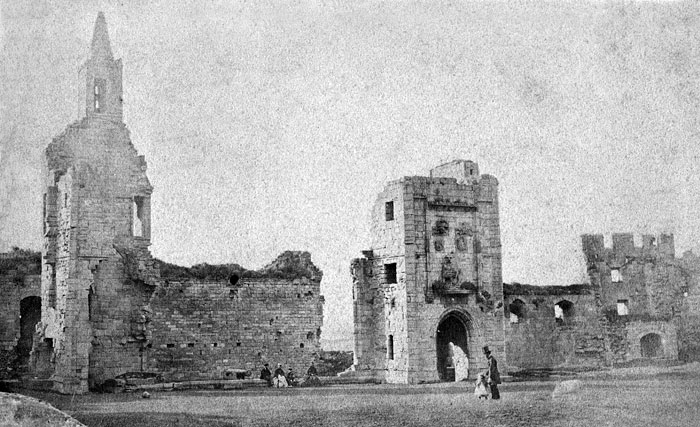Research on Warkworth Castle and Hermitage
Although much work has been done on the great tower, there remains plenty of scope for further study of the other castle buildings, the hermitage and the castle surroundings.

Research to Date
Research on Warkworth to date has tended to focus on the great tower. In the absence of sufficient documentary evidence different dates between the 14th and 16th centuries have been proposed for it. The present consensus of opinion is that it dates from the late 14th century. A full up-to-date survey of the great tower, however, remains to be done. The last complete set of plans was drawn up in the 1920s and no accurate drawn elevations presently exist.
Research Gaps
Since the publication of the Northumberland County History account of Warkworth in 1899,[1] little work has been done on the other castle buildings, the hermitage, the park or the town. Many aspects of the castle and its history merit further investigation, including:
- the Anglo-Saxon settlement at Warkworth and the residence of the Earls of Northumbria
- the circumstances of the castle’s foundation
- a full analysis of the buildings in the castle bailey and the different phases of their development
- how the Percy family used the castle in the late Middle Ages
- the relationship of the castle to the park
- the development of the town, one of the most perfectly preserved medieval settlements in Britain
- Warkworth’s connection to the sea and its relationship to castles nearby, notably Dunstanburgh and Bamburgh
- the history of the collegiate church
- the function of the hermitage and its relationship with other rock chapels of the late 14th century
- the history of the castle during the English Civil War
- the use of the castle in the 18th century and its importance as a tourist attraction
- the attempts to rebuild the castle in the 17th century and in about 1800, and Anthony Salvin’s restoration work of 1853–8
- English Heritage’s collection of medieval architectural stonework from Warkworth
- the antiquarian interests of the Dukes and Duchesses of Northumberland in the 19th century, and their proposals for restoring and furnishing Warkworth Castle.
READ MORE ABOUT WARKWORTH CASTLE AND HERMITAGE
Footnotes
1. JC Hodgson, A History of Northumberland, vol 5 (Newcastle upon Tyne, 1899) (accessed 13 December 2012).